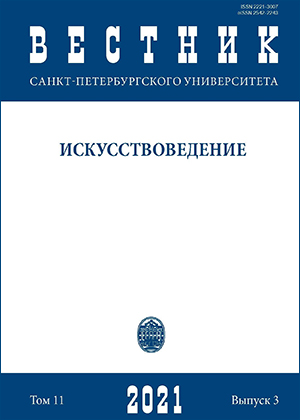Vitae as a Subject Source in the West European Pictorial Art of the 14–17th Centuries (On the Example of the Image of Saint Jerome of Stridon)
DOI:
https://doi.org/10.21638/spbu15.2021.305Abstract
For many centuries, Western European art drew its subjects from ancient history, mythology and the Bible. The artists paid great attention to the depiction of saints, for each of whom, over time, a pictorial canon with its own attributes and certain subjects was formed. As a result, the viewer not only easily recognized a particular saint, but he could also get acquainted with the facts of his biography and the role he played in the history of the church. Saint Jerome of Stridon was one of the most popular among artists, of all the Fathers of the Church he was portrayed more often than others. The article discusses the formation of this canon on the example of Jerome’s life and work. It is based on a literature review of this topic and it contains the main studies of the biography and literary activity of Jerome, from which the artists drew subjects for their works. The article describes chronologically the vitae of St. Jerome, his hagiography from Jacobus de Voragine’s “The Golden Legend”, biography and posthumous legends, miracles and appearances of the saint from “Hieronymianus” by Giovanni d’Andrea. Erasmus of Rotterdam wrote a historical biography of Saint Jerome. Since the 19th century a large number of scientific studies of Jerome’s life and work has appeared. The article analyzes specific works of Jerome, which were also sources for pictorial images. Special attention is paid to a review of art history literature, as well as medieval bestiaries, since the paintings with St. Jerome are filled with numerous symbolic animals. A review of literature and sources on the stated topic will help stimulate researchers to further study the relationship between the lives of saints and their iconography in art, identify gaps in research on this topic and specify aspects that researchers have not yet paid attention to.
Keywords:
Saint Jerome of Stridon, West European pictorial art, Saints, Vitae, Art symbol, Allegory, Bible, Reclusion, “The Golden Legend”, Art history
Downloads
References
Downloads
Published
How to Cite
Issue
Section
License
Articles of "Vestnik of Saint Petersburg University. Arts" are open access distributed under the terms of the License Agreement with Saint Petersburg State University, which permits to the authors unrestricted distribution and self-archiving free of charge.






